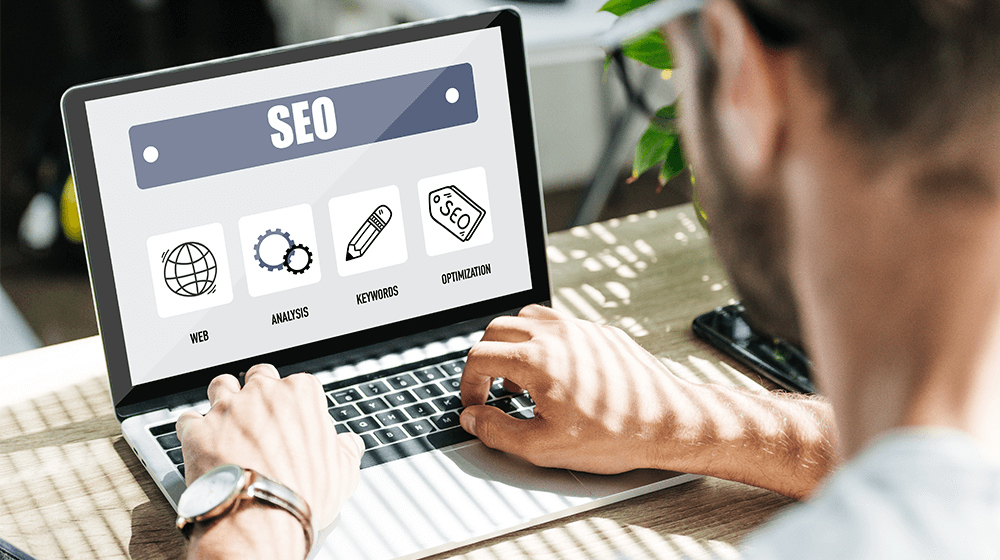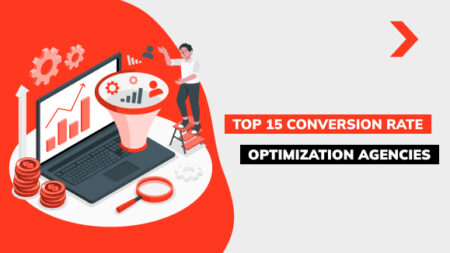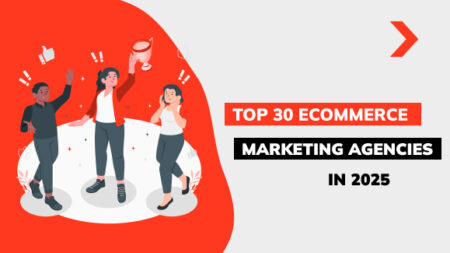Effective B2C Ecommerce Solutions for Online Retailers
There is quite a bit of information about B2C e-commerce. It’s a form of online trading aimed at directly selling to consumers. On one hand, it’s quite simple. On the other hand, B2C effectively bridges the gap between major cities and more remote regions in terms of product, goods, and service accessibility for the consumer.
In the world of Internet customer service, it’s important to remember your competitor is only one click away.
– Doug Warner
With B2C companies, direct online sales can be conducted without intermediaries or with minimal intermediaries. Eliminating intermediaries allows online stores to set the most competitive prices locally and increase prices (excluding intermediary fees), naturally leading to the desired growth in business revenue.

What is B2С Ecommerce?
Modern online retailing enables direct, remote sales without intermediaries. This system offers significant advantages for any B2C business and is crucial to relevant processes. Essentially, it facilitates business relationships structured as “Business-to-Consumer.”
In simple terms, B2C electronic commerce is building business processes for enterprises, companies, firms, organizations, and complexes using internet technologies, marketing tactics, tools, and innovative trends to enhance brand transparency and facilitate interactions with B2C customers. The most popular and relevant tool in B2C ecommerce is the online store.

Understanding the B2C Ecommerce Landscape
The online commerce industry represents a timely opportunity to build strong commercial relationships between specific organizations and individuals (users, consumers, buyers). With online trading in this format, selling products at customer-oriented prices is easy. Thus, online purchases in B2C occur solely to meet the needs of the company, organization, enterprise, or firm rather than for further resale of products and goods and making a profit, as in the B2B business model.
Types of B2C Models
Types of B2C refer to various kinds of commercial and non-commercial relationships. For example, types of B2C ecommerce are divided into active and inactive. Active ones are called online sales made by an online manager of an enterprise or company. In this case, the selling process is divided into stages:
- direct communication with potential customers;
- understanding consumer needs;
- presentation of product sales, services, products, and their benefits;
- addressing objections;
- closing the deal after payment.
Inactive sales occur without the intervention of an online manager. The essence of passive online sales is that they appear somewhat independently (automatic processing of online transactions through the store).
Benefits of B2C Ecommerce
There are quite a few benefits of online retailing. The main benefits of B2C include the following:
- fast and direct interaction with customers (communication can take place through various online channels);
- personalization opportunities (businesses can collect consumer data, systematize, and segment information);
- there is a real opportunity for scalability (by integrating, it is possible to automate specific components of the online sales process).
In any case, all benefits of B2C are apparent and evident.

How B2C Ecommerce Works
Sales in this industry typically operate on triggers. Triggers are psychological factors and techniques that influence the final decision of whether B2C customers will buy goods. When talking about examples of B2C, the following should be highlighted:
- Time resource deficit. Indicating that the offer will only be valid for a specific time (1, 2, 5, 10, 20, 30, 40, 50 hours, etc.).
- Social proof. Reviews and comments attract an audience that believes many people use specific goods or products.
- Product or goods deficit. They are available only in limited quantities (often, a specific number of units is indicated).
- Opportunity for savings. This refers to discounts, current offers, and bonuses. Alternatively, potential consumers can be shown how the brand’s products will help them save financial resources.
Using triggers will result in faster product sales. Moreover, triggers can be attributed to marketing tactics that emphasize the uniqueness of products or goods in one market segment or another.
Customer Journey in B2C Ecommerce
Today’s customer funnels are elusive and dynamic. It starts when a prospect is aware of the product and ends after they buy it. This journey requires awareness, consideration, decision, retention, and advocacy. A prospect gains awareness of a product, then discovers multiple options for their needs and compares them further. When a prospect has all the information they require, it’ll result in decision-making. In the retention stage of the customer journey, you’re attempting to cater to positive impressions and convince them to purchase more. If it’s the last advocacy stage, you’ll have a client who wants to keep buying from you and advocate on your behalf.
Payment Methods in B2C Ecommerce
Setting up commercial payment methods ensures the appropriate payment infrastructure and processing solutions. A retailer can accept customer card payments by installing a payment gateway into your ecommerce website. On the other hand, an online wallet allows the customer to keep multiple credit cards and bank account data. This means they don’t have to type their credentials when paying. They also could go through the checkout process by sending funds directly to the retailer’s bank account. Eventually, mobile payments require buyers to send a payment request to the service provider via a message. A linked card or bank account is charged afterward to complete the intended transaction.
B2C Ecommerce Trends
In online commerce, there are triggers and trends, such as the ability to combine advertising creatives and create specialized content for an online platform (store). As user experience shows, people pay attention to high-quality service, which is critically important.
Good service, implementing modern trends, etc., are often more important to online shoppers than low prices on goods. Thus, products can be sold at a higher price if quality service and modern trends attract, retain, and shape the brand image. A business will compete in the market and increase profitability by providing exemplary service and product service.
Successful B2C Ecommerce Examples
When it comes to the B2C business model, it’s essential to discuss successful examples. One example could be the production of handmade goods and products, which are very popular today. Another could be the establishment of one’s workshop, manufacturing, or mini-factories.
Other examples include services for the population (tailoring, beauty salons, dry cleaning, notarial services), catering establishments (cafeterias, cafes, bars, restaurants), retail outlets (stores selling clothing, footwear, cosmetics, etc.), marketplaces that retail goods, and more. Sometimes, searching for and choosing one of the business models can lead to a dead end. Still, if everything is carefully considered and planned, it is possible to understand how to use it to the brand owner’s advantage.
B2C Ecommerce Industry solutions
In B2C ecommerce, it is essential to consider not only product service, customers, etc. It is necessary to think about solutions that would help develop and increase the growth of online commerce. A practical solution would be audience segmentation. This allows businesses and consumers to stand out or distance themselves from competitors, highlighting their brand from the gray mass. Also, segmentation of the target paying audience opens up prospects for creating a promotion strategy for each group. This, in turn, increases the efficiency of marketing and digital commerce implementation.

Direct sellers
Since in B2C ecommerce, everything is aimed at the consumer, business-to-consumer will work intelligently and purposefully. Companies, organizations, enterprises, and firms will strive to sell products, goods, and services directly to customers. There will be no intermediaries. Therefore, B2C is very different from other business models because the commercial organization wants to earn from consumers independently and only allows people to resale goods and profit from them.
Online intermediaries
In B2C ecommerce, there is room for online intermediaries, which the organization, company, enterprise, or firm may need to be aware of. This means there may be a situation where a person has purchased a product or service but cannot or does not want to use it. If returning the product is not possible and all return deadlines have passed, an online intermediary may try to sell the product online. Consequently, online intermediation is very difficult for the enterprise that manufactures the product to control. Still, it is a good solution for additional sales through the World Wide Web, regardless of the circumstances.
Advertising content
For B2C ecommerce, launching advertising campaigns is relevant. This refers to promoting your website, store pages on social networks, or other online sales platforms. Therefore, a sensible decision would be to launch an advertising campaign with an attractive, clearly describing the benefits, privileges, and advantages of the product or item, which would attract the target online audience to online purchases and engage them in the process to the maximum.
Community-based
A good solution for B2C businesses would be to sell products and goods in small batches to the end target customer rather than produce a product or item individually for each customer. For B2C companies, firms, organizations, and enterprises, making batches of goods and offering them within categories is much more effective. This way, your community is formed, creating an individual customer base interested in the product or item, etc.
The best advertising you can have is a loyal customer spreading the word about how incredible your business is.
– Shep Hyken
Fees and subscriptions
Subscribing to a newsletter or paying for the use, for example, of current information is another solution for such businesses to generate additional income. This solution allows for maximum efficient interaction with customers directly, retaining control over a product’s salability and, in particular, over the production of their products. This solution is considered a reliable channel for brands, allowing them to retain customers, build a customer base, and increase profitability in the long term.

FAQ
What is B2C in e-commerce?
B2C is a well-known worldwide business model in which an organization or enterprise directly sells products, goods, or services to individual consumers. Online users purchase goods, products, or services from a firm, enterprise, or company to satisfy their personal needs. Sometimes, such businesses adhere to two online sales strategies simultaneously. The first is selling to end consumers through a B2C system. The second is selling to other firms companies so that they, in turn, engage in resale or use the goods, services, and products for their internal needs and thereby implement a B2C system.
How is B2C different from B2B?
While the B2C system involves selling from an organization to a specific individual without intermediaries, the B2B system operates differently. The business model entails selling goods, services, and products to another business. In simple terms, one company sells to another company. This is the sector of the market that operates not for the end ordinary consumer but for similar organizations or other businesses. The advantages of B2B lie in larger sales volumes, establishing long-term contacts (such as signing cooperation agreements), and a more stable demand and order flow.
What are the advantages of B2C ecommerce?
The B2C system has numerous advantages. Among the main ones are direct communication with target customers (businesses can use all channels — email, social networks, and messengers to receive feedback and solve issues), the ability to personalize and target offers (offering new products in categories that are more likely to interest-specific individuals through purchase history analysis tools), and scalability (integrating call tracking, CRM systems, etc., to increase business productivity and improve service quality).
How to start a b2c ecommerce business?
To build a B2C system and promote business, it is necessary first to define the target audience, identify and understand its needs (study competitors, observe online sales, analyze social networks and website activity), devise brand positioning (to attract loyal customers in modern conditions and high competition. It is necessary to have distinctive features and characteristics of products), determine marketing strategy (implement popular promotion tools and various advertising campaigns to engage new target audiences), and also not forget about the B2C sales system (attracting users, ensuring successful deal completion — free online consultations, convenient payment methods, free delivery, etc.).
Can B2C companies make a profit?
B2C marketing targets a broad audience, meaning residents of a whole region, country, or many other countries can purchase online through convenient company marketplaces, organizations, firms, and enterprises directly from their websites or social media pages. Accordingly, companies collaborating with individuals (ordinary people) directly can mark up products, goods, and services and earn money from them. Additionally, there’s the nuance that online buyers sometimes make spontaneous purchases directly from the business and become regular customers. In this regard, B2C businesses also benefit in terms of profitability.





